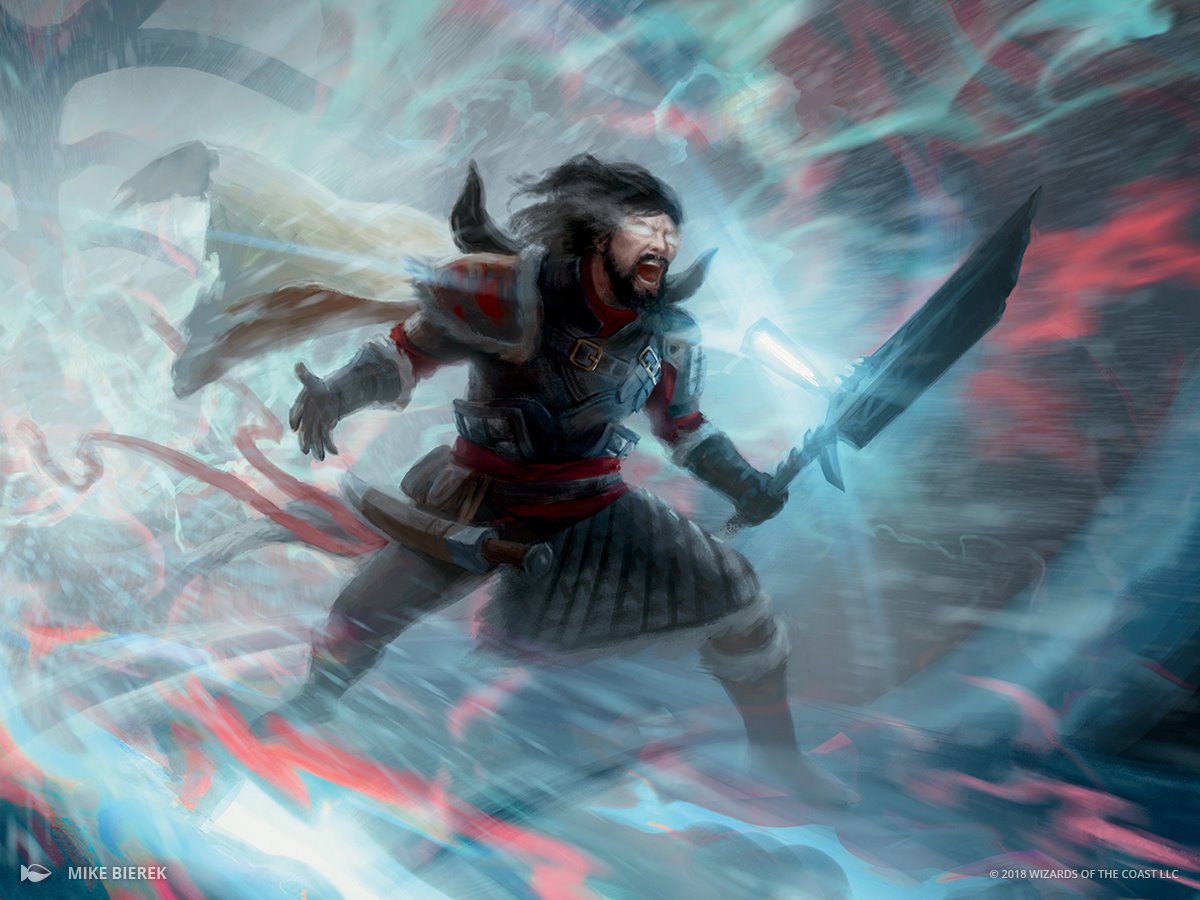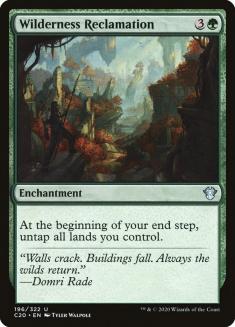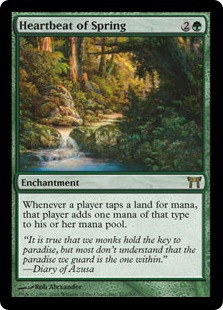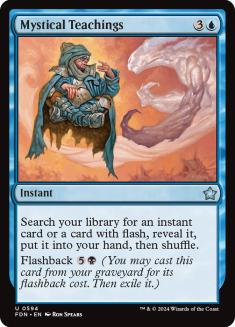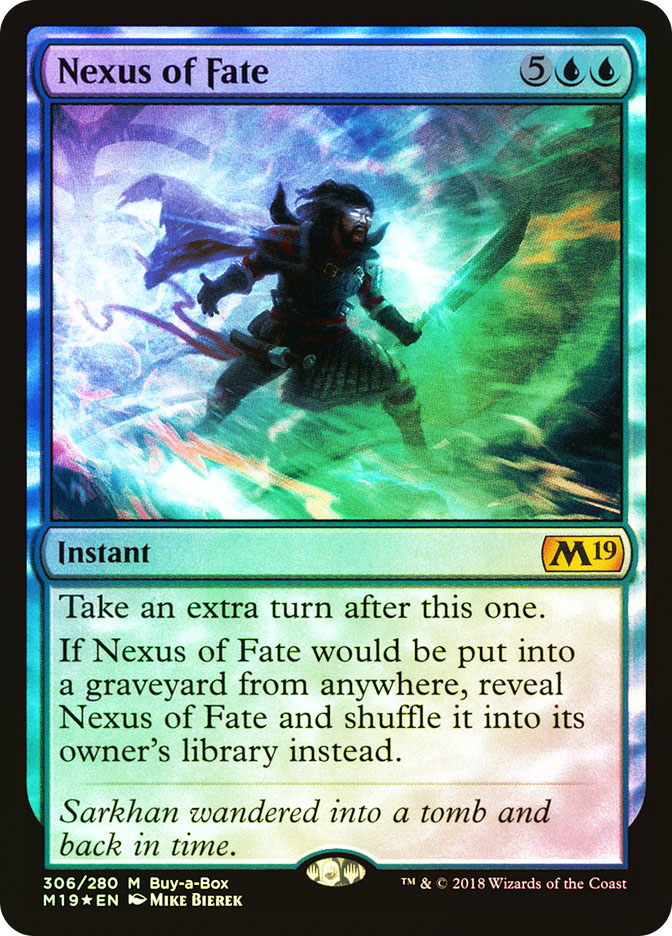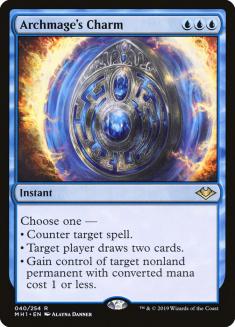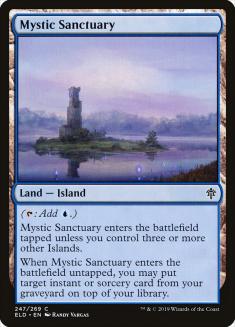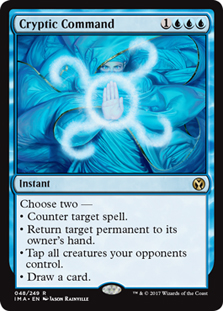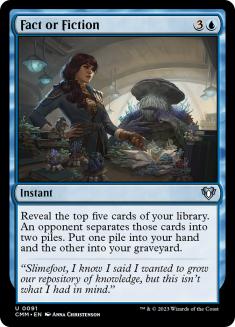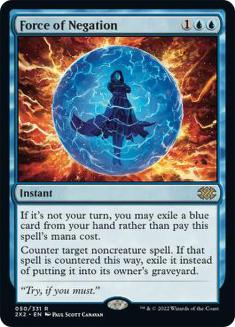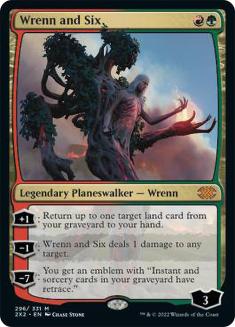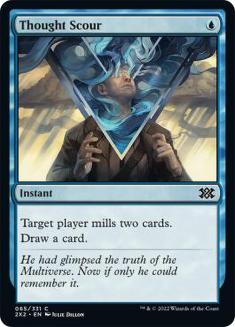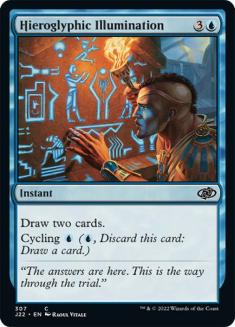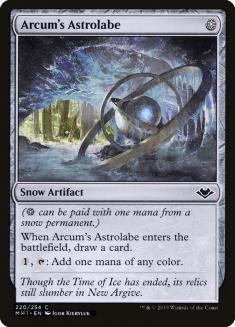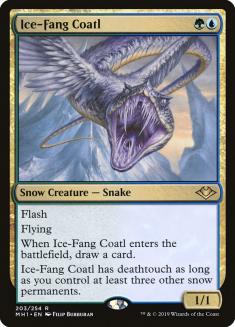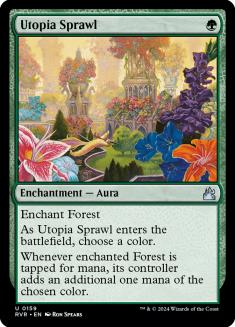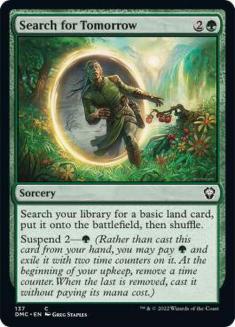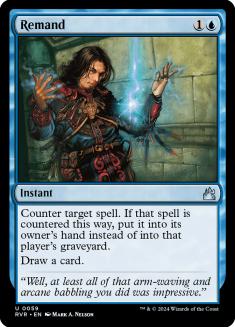Wilderness Reclamation is quite dear to me, and appeals to my tastes in Magic a lot: it lets you operate largely at instant speed and is fine as a piece of a fair gameplan, but when things line up just right, it also lets you go wildly over the top of your opponent and do some really silly things. It’s also just a card with a high raw power level to it; provided your deck is built correctly, it often functions as somewhere between a free spell and a Dark Ritual on the turn you cast it, and then proceeds to double your mana on all your subsequent turns.
I’ve always felt like Wilderness Reclamation was under-explored in Modern considering the card’s power level, and at the very least I’ve really wanted to try to play with it more there, even if only because it makes for some really fun decks. Up until recently the only place the card has seen real play was in Sultai Teachings, which received a small amount of attention before disappearing off the map during Hogaak Summer.
Creatures (4)
Lands (24)
Spells (32)

This deck is highly interactive, looking to control the opponent’s battlefield with removal spells and fight on the stack with a handful of counterspells. Wilderness Reclamation isn’t being pushed to its very limit here for the most part, though the additional mana is always welcome, but instead is looking to fuel the card Mystical Teachings. Teachings as a card is normally too slow and expensive for Modern, but Reclamation goes a long way towards helping with this and the end-game of repeatedly searching up Nexus of Fate with Teachings can let you take over the game abruptly.
This list offers a nice starting point and a bunch of ideas for how to approach using Reclamation in Modern, but is largely redundant in its previous form as blue interactive decks are now all tending towards a very specific direction.
Mystic Sanctuary is an obscene Magic card, especially in combination with fetchlands. It means your topdecks remain incredibly high in quality as the game goes on, since any drawn fetchland translates into access to the best spell in your graveyard the next time you draw a card; it allows Archmage’s Charm to repeatedly churn through your deck, accruing more and more resources; and in the late-game, its ability to be bounced by your Cryptic Command and thus loop your Cryptics interminably renders your opponent’s combat step eternally irrelevant.
It isn’t just that Mystic Sanctuary and the associated Archmage’s Charms need to be slotted into these Reclamation decks now, but that they fundamentally change what the Reclamation decks need to value. The ability to shut out your opponent’s combat steps forever with Cryptic Command loops means there’s a lot less need to be using removal spells on anything but the most aggressive and disruptive creatures, whilst the repeated card draw from Archmage’s Charm means you don’t care as much about playing cards like Mystical Teachings to give you inevitability.
Creatures (8)
Planeswalkers (2)
Lands (26)
Spells (24)

This Temur Reclamation list that saw some success on Magic Online starts to hint at the sort of direction we could take things in. There are some details I don’t love, most notably the lack of Archmage’s Charms, but also a lot of things that are very appealing.
Uro, Titan of Nature’s Wrath is quietly warping Modern, making the format slower and more midrange-focused than it has been in a long time because a lot of the aggressive decks struggle to beat this card hitting the battlefield. It also plays particularly well in a Wilderness Reclamation strategy.
When you don’t have a Reclamation in hand, having some ramp you can cast instead can really matter. Access to lifegain that doesn’t take up deckbuilding space helps in a lot of otherwise potentially challenging matchups. It acts as a win condition that again takes up very little deck-building space, and it works particularly well with Cryptic Command loops as its attack trigger lets you lock your opponent out of combat with just a single Cryptic instead of needing access to two copies.
Uro combines well with Fact or Fiction, too; most of the time when you reveal an Uro to a Fact or Fiction, you actually want the Uro to go to the graveyard from it because that results in less of a mana investment to end up with an Uro on the battlefield. Having a card revealed to your Fact or Fiction that your opponent actively doesn’t want to have go towards the graveyard is a nightmare scenario for them as far as splitting the piles for you to choose between is concerned, making splitting those piles harder than ever. Meanwhile the Fact or Fiction almost certainly puts enough cards into your graveyard to escape an Uro following it if you want to do so, and any fetchlands you reveal to your Fact or Fiction quickly turn into more copies of Fact or Fiction or Cryptic Command thanks to Mystic Sanctuary. With so much card advantage coming your way like this, Force of Negation’s alternate cost of exiling a blue card from your hand is the least concerning it has been in a long time, so that ends up being an easy inclusion in a deck like this too.
That all said, I’m unsure about these red cards. With Modern being surprisingly slow right now Lightning Bolt doesn’t seem particularly necessary to me, at least not until decks like Humans or Infect pick up some popularity. Wrenn and Six is a fine card advantage engine, but if we add in Archmage’s Charm, the cards should flow freely anyway and I’m not interested in having to play cards like Lonely Sandbar to help enable Wrenn, as any time I’m playing them as my land drops, they risk interfering with my ability to play and use my Mystic Sanctuaries.
Creatures (6)
Lands (26)
Spells (28)

This is where I am with my own take on a Modern Wilderness Reclamation deck – Simic Reclamation. I’ve avoided the third colour that many other people are playing in order to have better, less painful mana and also so that I could find room for the fourth Mystic Sanctuary. It’s early days, so I’m still tuning the details, but the deck has been performing quite well for me and I like it provided disruptive aggro decks like Humans aren’t too popular.
Despite what you might think when you hear about a deck playing Wilderness Reclamation and Nexus of Fate, this isn’t really a combo deck. Instead it plays a lot more like a control deck. You often take several turns to close out the game once you’re stable and safe, and you gameplan is generally to work towards a point where you can make your opponent’s actions irrelevant due to having a hand full of counterspells, gaining a lot of life, or locking out their combat step with Cryptic Command.
Against most aggressive decks, you’ll look to stymie early aggression as much as you reasonably can and attempt to get Uro online as soon as possible. With an Uro attacking and protected by counterspells, you should quickly turn the corner, as even if your opponent’s battlefield has spiraled out of control, it is all rendered irrelevant by Cryptic loops, and an Uro means you only need one copy of Cryptic Command to have these loops online.
Honestly, a lot of decks can’t reasonably beat this gameplan once you’ve got it all online, so even in a lot of slower matchups this is Plan A, though the slower the matchup, the less of a rush there is to get an Uro onto the battlefield and get to this point. This gameplan will often still beat a deck like Amulet Titan, for example, even if your Uro doesn’t hit the battlefield until Turn 6 or 7.
Against decks that can answer Uro effectively, or against which this plan simply doesn’t go big enough, we have Nexus of Fate. Between all the mana from Wilderness Reclamation, Fact or Fiction recursion aggressively dumping cards into your graveyard, and all the card draw from nearly every spell in the deck, you can tear through your deck after a certain point in the game if you really want to. It will still take a few turns to get down to the point where you draw Nexus of Fate every single turn, but your counterspells should let you tread water long enough to get there, and once you do, even a lone Ice-Fang Coatl should kill your opponent.
Early on I was playing Thought Scour but I haven’t really had any trouble fuelling my Uros or finding spells to return with my Mystic Sanctuaries, and having to mill my opponent when I wanted to draw a card I’d just Sanctuaried to the top occasionally felt awkward, so I moved to trying out Hieroglyphic Illumination instead and have been happy. You mostly end up cycling it, but once you have multiple Wilderness Reclamations online, using it to draw two cards is a great way to keep the wheels spinning as you draw through your entire deck. Any card that can incidentally prevent me from running out of things to use my mana on in the late-game like this is very appealing to me in this deck.
I’m not playing Arcum’s Astrolabe because we don’t need the mana fixing and it being a sorcery-speed spell matters a surprisingly large amount, as the more sorcery-speed spells you have the more likely you run out of things to spend your Reclamation mana on. The downside to this is the Coatls in this deck are somewhat weak; they never have deathtouch on Turn 2, and lack it Turn 3 some amount of the time as well. You need another win condition in addition to Uro though, and you want that win condition to both be instant-speed and relevant against aggressive decks if possible, so whilst Coatl isn’t at its very best here it still feels like the best option for its slot.
In previous versions I tried out ramp spells like Utopia Sprawl and Search for Tomorrow in an effort to make sure I could cast Wilderness Reclamation on Turn 3 as often as possible, but the low amount of access to Turn 1 Snow-Covered Forests made Sprawl feel incredibly awkward against anyone with Field of Ruin, whilst suspending Search for Tomorrow on any turn beyond the first felt miserable considering the need to hold mana open for your counterspells. On top of these problems, ramp spells added to the amount of “dead ends” there were in the deck once you have Wilderness Reclamation online; the more cards you have that don’t draw cards, the harder it is to consistently churn through your deck and take advantage of all your mana.
As far as sideboarding goes I like to remove Remand against proactive decks that have a high density of one-mana spells, Force of Negation against creature decks, and Ice-Fang Coatl in matchups where the body isn’t relevant (such as against a deck like Amulet Titan) and I’m interested in sideboarding in my Tireless Trackers; I dislike having Uro be the only win condition in my deck, so making sure there’s at least one of Coatl or Tracker in your deck at all times is important.
It’s fine to trim an Uro in matchups that force you to always hold open countermagic, like Ad Nauseam, and Hieroglyphic Illumination is a fine card to cut in matchups that aren’t grindy (though I’d tend to try to cut other cards beforehand if possible). I haven’t cut Nexus of Fate in sideboarding yet, but I imagine it could be fine to do so if you’re confident both that your opponent won’t have significant graveyard hate in their deck and that simply escaping an Uro or two should end the game against them the vast majority of the time.
I’ve been really enjoying this Simic Reclamation deck, and am excited to explore other approaches to taking advantage of Wilderness Reclamation in Modern. It’s a good time to draw a lot of cards.

